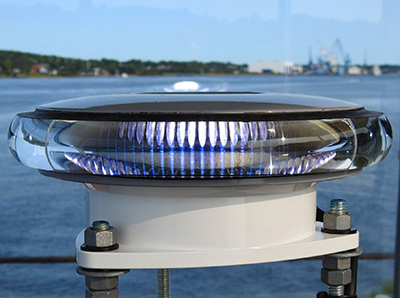The bulb (with aluminium heatsink) is 11×40×23 cm overall and 200W (1165cd/cm²), with monitoring and sync options.
Bcs it’s a neat design:

But perhaps to note - bulbs like that are only if you want to keep those giant rotating fresnel lenses (and even with that those LEDs on that bulb still need a lens on their own).
The simpler solution is to use one of the new designs, without the old lenses or even without the whole old lighthouse structure, eg:


Wow look at those cooling fins, what a monster!
Thanks for posting the pic, and also the link!
The specs say it replaces a traditional 500w-1500w light source with a 200w LED fixture. I’m honestly surprised at how low that is overall. I would expect that a lighthouse would be using at least 10kw of power or more, especially in areas prone to fog. I can only assume that there are lenses to focus it down to a tight beam.
For comparison, I recently installed LED lights in a moderately-sized industrial area. Total power consumption is a little over 2kw, or 10 lighthouses.
I had a 100W LED that would put your eye out. Even with a fat heat sink and fan it partially burned itself. Kinda scary to deal with.
I’m guessing each LED is 200W?
200W total. The thing is only 32cm tall and recommend to be run at a 50% max duty cycle.
That’s the difference between making a light that can be seen over a large area vs lights to brightly illuminate a large area. Lighthouses only need to be seen not illuminate the sea.
But yeah, I would have guessed it to be higher as well.

